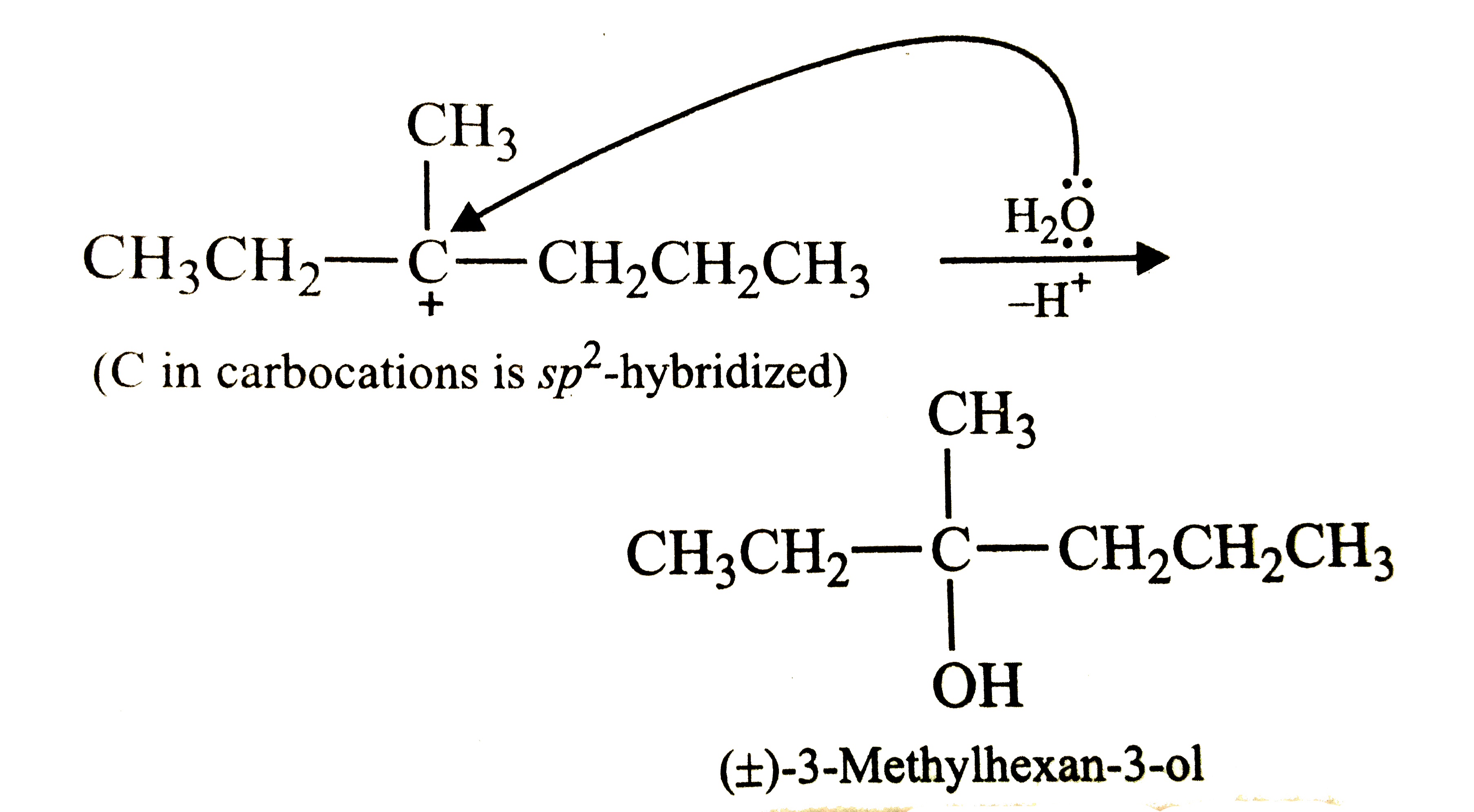Saved Bookmarks
| 1. |
The polarity of the carbon-halogen bond is responsible for the nucleophilic substitution reactions of alkyl halides which mostly occur by S_(N)1 and S_(N)2 mechanisms. The rates of S_(N)2 reactions among other things are governed by steric factors while than of S_(N)1 reactions are governed by the stability of intermediate carbocations. chirality has a profound role in undersetanding the mechanism of S_(N)1 and S_(N)2 reactions. whereas S_(N)2 reactions of chiral alkyl halides are accompanied by inversion of configuration, S_(N)1 reactions are characterised by racemisation. Q. In the solvolysis of 3-methyl-3-bromohexane, which of the followin statements is not correct? |
|
Answer» it involves CARBOCATION INTERMEDIATE  
|
|
Discussion
No Comment Found
Related InterviewSolutions
- Which of the following compounds is not cleaved by HI even at 525 K ?
- To a 25 mL H_(2)O_(2) solution excess of an acidified solution of potassium iodide was added. The iodine liberated required 20 " mL of " 0.3 N sodium thiosulphate solution Calculate the volume strength of H_(2)O_(2) solution.
- The suggested mechanism of a reaction is : (a) A+BhArrD("fast) "(b)A+Drarr2C("slow")Write the balanced equation of the reaction if its experimentally deduced rate equation is , rate k=[A]^(2)[B] Find the intermediate formed during the course of the reaction . Does the predicted rate law from the mechanism match the experimental rate law ?
- Which of these changes with time for a first-order reaction A Rate of reaction B . Rate constant C . Half-life
- What is the hybridisation of central atom in the product obtained along with hydrofluoric acid when complete hydrolysis of Xenon Hexa Fluoride takes place ?
- Which of the following amino acid forms sulphide bond in polypeptide
- Which of following pair is Diastereomers:
- What is the major product of the following reaction CH_3C-=C-CH_2-CH_3overset("1 mole of " Cl_2)to
- Which polymer is used in petrol tank linings ?
- Which of the following carbohydrates are branched polymer of glucose ?